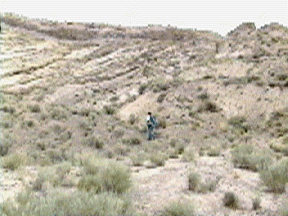 This shot was taken looking north. |
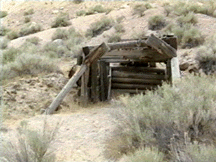 Some of the best quality uranium came from the pile to the left of this wooden structure. |
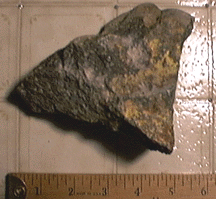 Here is some "Weeksite" ore. |
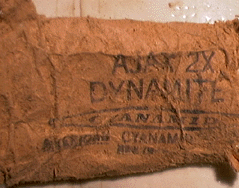 I found this while digging in the earth with my rock hammer. It was a startling experience! |
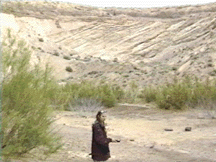 See a zoom shot of the north wall (Quicktime Movie 166k - No Sound) |
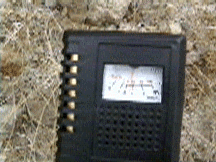 We were getting high readings from the mine dump piles! (Quicktime Movie 180k - Sound) |